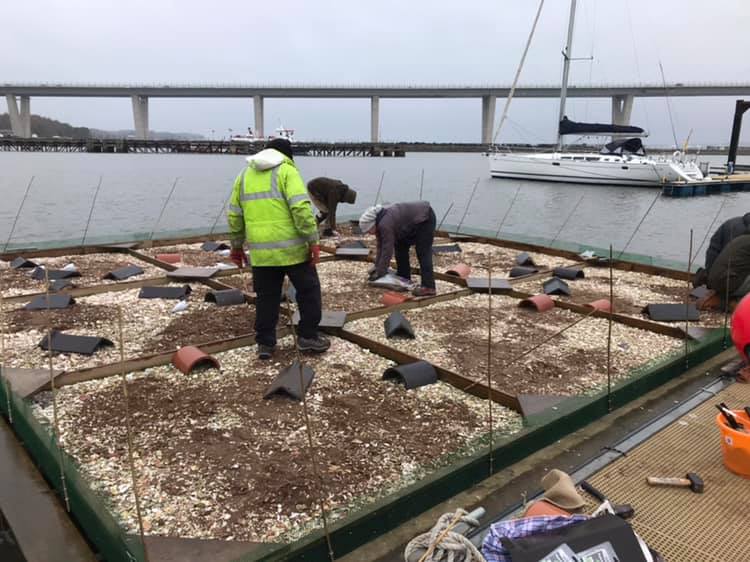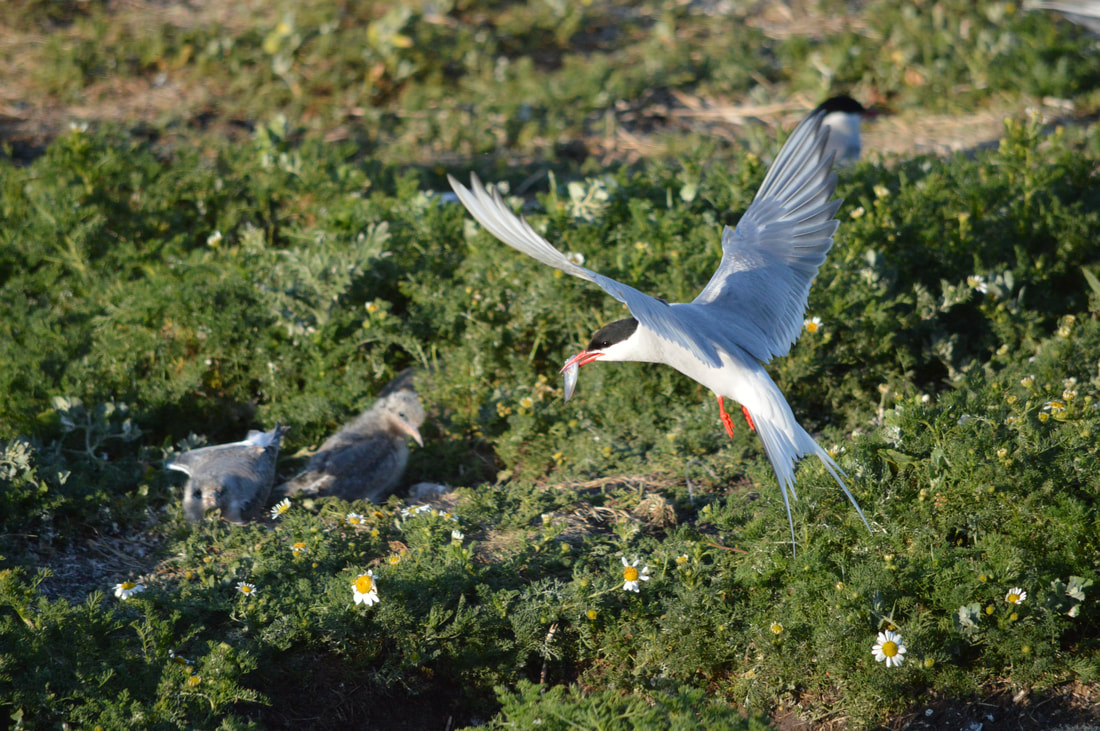|
Last month, the LIFE Project was busy preparing the Port Edgar Tern raft for the upcoming breeding season with volunteers from the Forth Seabird Group.
With the a top-up of shingle and addition of canes (see our previous post on why they can be useful in deterring predators), chick shelters and tern decoys, it's all ready! Thank you for a great day!
0 Comments
Boothby,C., Redfern, C. & Schroeder, J. 2019. An evaluation of canes as management technique to reduce predation by gulls on ground nesting seabirds. IBIS. DOI: 10.1111/ibi.12702. A paper was published in 2018 which investigated how effective the presence of canes was in an Arctic tern colony to deter gulls. This pilot experiment was undertaken at the National Trust’s Farne Islands. Four sites across two islands (Inner Farne and Brownsman) were separated into three treatment areas: no canes, low density cans (2m apart) and high-density canes (1 metre apart). The results revealed that the canes did act as a deterrent with the caned areas receiving less than half of the number of predation attempts compared to the control area (no canes). Interestingly though, there was not a significant difference between the two cane densities.
At the beginning of the study, the hypothesis was that canes may impede the ability of large gulls to successfully take Arctic Tern Sterna paradisaea eggs or chicks. However, although the canes seemed to act as a deterrent to predation attempts, when birds ignored the canes and tried anyway they were just as successful as in the areas without canes. In short, canes seem to deter the gulls from trying, but those that did try were just as likely to be successful as in the control areas. Further research is needed to support these findings but as the canes are of minimal cost and easy to set-up, this pilot study indicates that they could provide a useful and versatile tool for conservation managers. This information came from the summary written by Claire Boothby in the link below. https://www.bou.org.uk/blog-boothby-gull-predation-deterrent-seabirds/ Metapopulation dynamics of roseate terns: Sources, sinks and implications for conservation management decisions As part of the Roseate Tern LIFE project, we have analysed ringing and recovery data for the three main roseate tern colonies in NW European metapopulation i.e. Rockabill and Lady’s Island Lake in Republic of Ireland and Coquet in the UK. French colonies could not be included for the lack of sufficient data. The aim of the study was to determine which demographic parameters were responsible for the growth of the colonies. The study, which was published late October 2018 in the Journal for Animal Ecology, was led by Adam Seward and Mark Bolton from RSPB Centre for Conservation Science and funded by EU LIFE Programme and Natural England. Authors found that Ireland’s Rockabill colony, where 1,642 pairs of roseate terns nested this year, is the only site in the UK and Ireland which is currently effectively “exporting” roseate terns to other colonies and its growth has relied on good productivity and survival. On the other hand, for over 20 years the growth of the roseate tern colony on Coquet Island was sustained by birds from the Rockabill. This meant that Coquet Island was, between 1992 and 2016, a “cryptic sink”, attracting more young birds to nest there than have fledged from it and survived to breed at the species’ other colonies. Despite the reliance of the Coquet Island colony on immigration from Rockabill, Coquet Island has played an important role in maintaining the species in the UK, achieving yet another record of 118 nesting pairs in 2018. Having an additional nesting colony, the UK and Irish population as a whole is better protected against catastrophes like severe weather events, disturbance or disease that might hit any one colony. Moreover, since the research was carried out, it appears that the Coquet Island roseate terns are now beginning to sustain their own numbers. In 2016, 50% of terns nesting on the island had been hatched there, and this year the number had climbed to 60%. Without demography data, it is tricky to choose and invest into sites, where roseate terns could eventually disperse to. We now know that where coastal colonies of other tern species, such as common terns, are doing well and feeding predominantly in the marine environment, there is probably enough food and safe nesting areas for roseate terns to thrive there too. The next step is to look for such potential nesting sites and consider 'Coquet-style management' to give Roseate Terns a helping hand to colonise them.
Seward A, Ratcliffe N, Newton S, et al. Metapopulation dynamics of roseate terns: Sources, sinks and implications for conservation management decisions. J Anim Ecol. 2018;00:1–16. https://doi. org/10.1111/1365-2656.12904 |
More Blogs to Read
AuthorThis blog is maintained by various people from the project team. Archives
August 2020
Categories
All
|
Roseate Tern LIFE Project is supported by the LIFE Programme of the European Union
LIFE14 NAT/UK/000394 ROSEATE TERN
LIFE14 NAT/UK/000394 ROSEATE TERN









 RSS Feed
RSS Feed